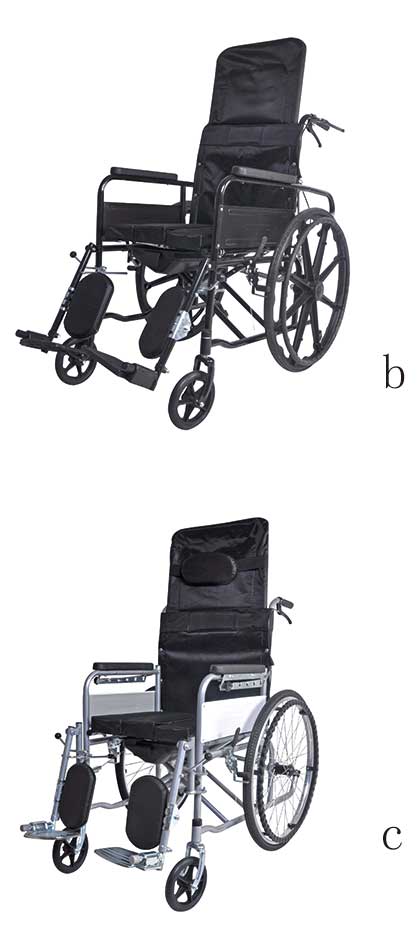Welcome to our websites!
physiotherapy and rehabilitation equipment
Physiotherapy and Rehabilitation Equipment Enhancing Recovery and Mobility
Physiotherapy and rehabilitation play a crucial role in the recovery and improvement of mobility for individuals suffering from injuries, surgeries, or chronic conditions. The goal of these therapeutic practices is not only to restore physical function but also to enhance the overall quality of life for patients. Central to the success of physiotherapy and rehabilitation are the various types of equipment used across different settings, from hospitals to private clinics and home care. This article explores the significance of physiotherapy and rehabilitation equipment, highlighting key tools and their impact on recovery.
One of the most fundamental types of equipment used in physiotherapy is the therapeutic exercise apparatus. These include resistance bands, weights, and stability balls. Resistance bands are particularly popular because they offer varying levels of resistance, making them suitable for patients at different stages of recovery. By incorporating these tools into their rehabilitation programs, physiotherapists can help patients build strength, improve flexibility, and regain mobility in a controlled manner. Stability balls, on the other hand, can be used for balance training, core strengthening, and improving overall coordination, which is vital after injuries or surgeries.
Another essential category of equipment is the electrotherapy devices, which include ultrasound machines, TENS (Transcutaneous Electrical Nerve Stimulation) units, and electrical stimulation devices. These tools are used to alleviate pain, reduce inflammation, and promote tissue healing. For instance, ultrasound therapy uses sound waves to penetrate deep tissue, increasing blood flow and accelerating the healing process. TENS units work by delivering electrical impulses to specific areas of the body, effectively blocking pain signals from reaching the brain. The use of such devices can significantly enhance a patient’s comfort during the rehabilitation process, allowing them to engage more fully with their therapy programs.
A significant focus in modern physiotherapy is on the use of assistive devices to enhance mobility and independence for patients. Wheelchairs, walkers, crutches, and canes are commonly provided to patients post-surgery or during recovery from severe injuries. These devices are tailored to suit the specific needs of individuals, allowing them to navigate their environment safely. The integration of technology into these devices has also advanced, with electric wheelchairs and smart crutches providing greater ease of use and additional support for patients with severe mobility challenges.
physiotherapy and rehabilitation equipment

Gait analysis equipment is another important aspect of physiotherapy. Tools such as motion capture systems and pressure sensors are used to analyze movement patterns and identify abnormalities in gait. This data is invaluable for physiotherapists, as it allows them to develop personalized rehabilitation programs based on the specific needs of their clients. By understanding how a patient moves, therapists can target interventions more effectively, optimizing recovery times and outcomes.
In addition to the traditional equipment, technology has brought about innovative solutions in rehabilitation, such as virtual reality (VR) and augmented reality (AR) systems. These technologies can simulate real-world environments and challenges while providing patients with engaging and interactive methods to participate in their therapy. VR and AR can distract patients from pain during exercises, motivate them to complete their rehabilitation tasks, and create a more enjoyable atmosphere for therapy sessions.
Furthermore, wearable devices, such as fitness trackers and smartwatches, are increasingly being incorporated into rehabilitation programs. These devices can monitor various parameters like heart rate, physical activity levels, and motion, empowering patients and therapists with real-time data. Patients are encouraged to take an active role in their recovery, as they can track their progress and set personal goals to enhance motivation.
In conclusion, physiotherapy and rehabilitation equipment is integral to the recovery process for individuals with physical impairments. From traditional exercise tools to advanced technological innovations, the landscape of rehabilitation equipment continues to evolve, allowing for personalized and effective treatment plans. As the field of physiotherapy advances, so too does the equipment, ultimately enhancing patient outcomes and restoring quality of life more effectively. Through ongoing research and development, the future of physiotherapy promises to integrate even more sophisticated tools, thereby revolutionizing how patients receive care and regain independence.
-
Transforming Healthcare with Hospital FurnitureNewsJun.24,2025
-
Rehabilitation EquipmentNewsJun.24,2025
-
Mobility and Independence with WheelchairsNewsJun.24,2025
-
Freedom of Mobility with Our Rollator WalkersNewsJun.24,2025
-
Comfort and Independence with Commode ChairsNewsJun.24,2025
-
Bathing Safety and Independence with Shower ChairsNewsJun.24,2025
-
Navigating the Wholesale Landscape of Electric Mobility Solutions: Key Considerations for Power Wheelchair DealersNewsJun.10,2025











